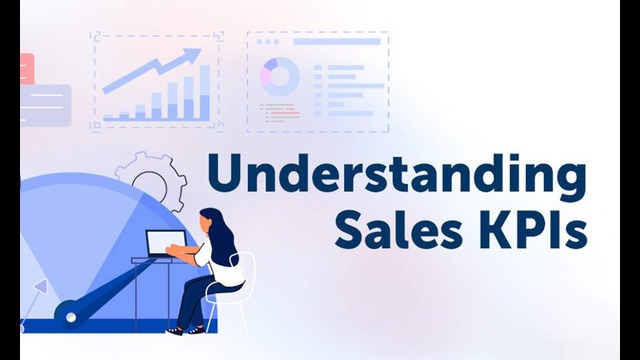Sales KPIs
SALES KPI TO ACHIEVE BUSSINESS GOALS
TO BOOST SALE
· Year-over-year sales YoY Sale)
· Conversion rate (CR)
· Average order value (AOV)
· Basket size
TO STRENGTHEN CUSTOMER EXPERIENCE
· conversion rate (CR)
· average order value (AOV)
· basket size
· customer retention rate (CRR)
TO Reduce stock-outs
· Inventory turnover (ITR)
· Sell-through rate (STR)
· Shrinkage
TO Optimize profits
· Cost of goods sold (COGS)
· Gross profit (GP)
· Net profit (NP)
· RETURN ON SALE (RoS)
· Gross margins return on investment (GMROI)
A FEW SALES KPI EXPLAINED IN SHORT
COGS
Measuring your COGS is essential to achieving profitability. If you know how much you spent to acquire or produce your products, you can set prices that are competitive, but that also offset your expenses.
average order value (AOV)
Also called the average transaction value (atv), this retail metric measures how much a customer spends in your store on average.
If your AOV is high, customers are probably either buying your high-value items or buying lots of items at once. A low
average order value would mean the opposite.
AOV = Total revenue / Number of orders or transactions
If you can encourage customers to increase their average purchase through
· merchandising strategies (showcase products in physical and digital stores)
· identifying popular products
· shopping promotion programs
Then your efforts will likely boost your profit and enable your company to grow.
The average transaction value for UK top retailer” Tesco” between 2020 and 2022 fluctuated up and down by 5%
BASKET SIZE
How many units are sold per transaction on average.
A larger basket size indicates that people are buying many items when they place an order with your store. While this may not indicate anything in particular about your business depending on what kind of products you sell, if your basket size is small, you may want to consider upselling, cross-selling, or creative product promotions to encourage larger sales.
BASKET SIZE = Total number of units sold / Total number of transactions
inventory turnover ratio (ITR) OR stock turnover ratio (STR)
It measures the number of times a retailer sells and replaces inventory during a specific period.
ITR = Cost of goods sold (COGS) / Average inventory cost
Monitoring your inventory turnover gives you insight into which specific products are in highest demand. With this knowledge, you can better plan your inventory and make sure you maintain optimal inventory levels.
An excessively high inventory turnover could indicate that youÂ’re selling your goods too fast and youÂ’re not stocking up fast enough to meet customer demand. Meanwhile, a very low inventory turnover rate could mean youÂ’re not selling your products fast enough, which could create deadstock or result in inventory obsoletion.
TO FIND AVERAGE INVENTORY COST
AVERAGE INVENTORY COST = TOTAL COST OF GOODS AVAILABLE FOR SALE / TOTAL UNITS AVAILABLE FOR SALE
Gross margins return on investment (GMROI)
It measures the profit you make from the amount you invest in product stock.
GMROI = GROSS MARGIN / AVERAGE INVENTORY COST
Its specificity can tell you what is worth carrying in your stock and what is not, as well as what you could invest further in. The more you make on each profit margin, the better your retail business does as a whole. Growth comes when you find products worth
investing in and have a good return on their initial costs.
TO FIND GROSS MARGIN OR GROSS PROFIT MARGIN
GROSS MARGIN OR GROSS PROFIT MARGIN = ( REVENUE - COGS) / REVENUE
Commonly it is expressed in %
The gross margin represents the percentage of a company's revenue retained as gross profit, expressed on a per-dollar basis.
20% gross margin implies the company retains $0.20 for each dollar of revenue generated, while $0.80 is attributable to the incurred cost of goods sold (COGS).
GMROI > 1.0 or 100%:
A GMROI above 1.0 means the retailer is generating more in gross margin than it is spending on inventory. This indicates that the inventory is being managed effectively.
GMROI < 1.0 or 100%:
A GMROI below 1.0 suggests that the retailer is not generating enough gross margin to cover the inventory costs. This could indicate excess inventory, pricing issues, or underperforming products.
GMROI Calculation Example
Using the formula above, we can calculate the inventory GMROI of a fictional company, ABC Corp.
Let’s assume that ABC Corp. has a revenue of $1,000,000, a CoGS (cost of goods sold) of $500,000, and an inventory cost of 200,000.
First, we have to calculate the Gross Margin of ABC Corp.
Revenue ($1,000,000) – CoGS ($500,000) = Gross Margin ($500,000)
Next, we divide the Gross Margin ($500,000) by the Average Inventory Cost ($200,000).
This gives us a GMROI of $2.50.
In other words, ABC Corp. makes an average of $2.50 in profit for every dollar they spend on inventory.
Return on Sale (RoS)
It measures of how efficiently a company turns sales into profits.
RoS = Net Profit / Net Sale
It is a ratio that measures a company's operating profit relative to its net sales.
It is a financial ratio that's important for sales because it helps companies understand how well they're generating profits from their revenue.
RoS can help companies determine if their sales and financial strategies are working, and if any changes need to be made.
A high RoS can help businesses grow faster and increase their market share.








Comments
Post a Comment